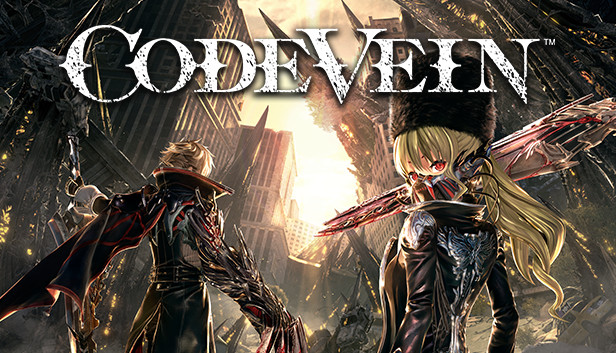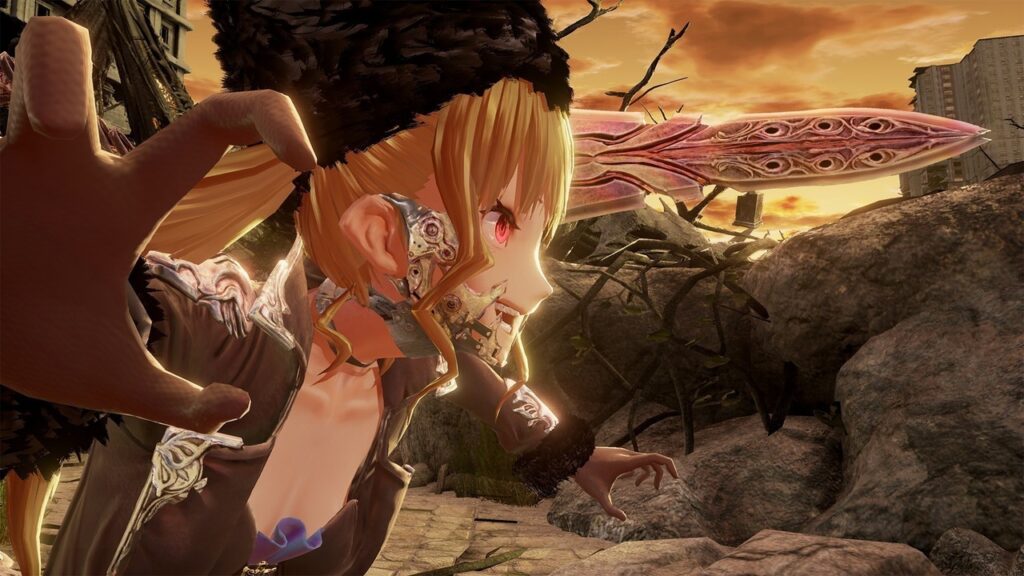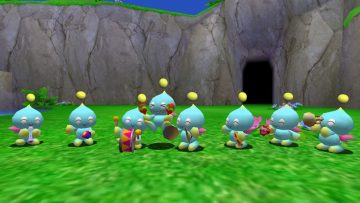
Hands-On: Code Vein
There’s hard games, and then there’s very hard games, the latter most prominently represented by the Dark Souls series. These kinds of games are notoriously punishing, with their extreme difficulty and unforgiving gameplay mechanics driving many an unprepared gamer to insanity. Given the sales figures for titles like Dark Souls and Bloodborne, there’s clearly a demand for this type of game, and a new production from Shift and Bandai Namco called Code Vein looks to contribute something of its own to this marketplace.
Code Vein takes place in a post-apocalyptic vampiric dystopia, where your character struggles to regain their memories and escape the ruined world. Of course, evil forces are working against you, and your fight for survival revolves around collecting their blood and growing stronger. You’ll have an ally character at your side as you explore and fight, but don’t be lulled into a false sense of security by this – the game will still challenge you mightily.

Code Vein and its development team are insistent on showing how different this production is from the Dark Souls series, but to ignore the overt similarities on display would be to ignore the core of the game. Like the Souls games, you must manage health and stamina bars to ensure that you can continue fighting. You’ll get locked into lengthy attack animations whenever you go to strike something, so every move must be carefully considered. Blocking and guarding are essential, and dying in battle will force you to drop all of the blood you’ve collected. The “ultra-hard game” template is on full display here, and at this stage of development, Code Vein does little to innovate on the core mechanics at work.
It does, however, put its own unique twist on these mechanics. As mentioned previously, you have an ally character fighting alongside you who can help out in a sticky situation. In the demo we played on the show floor, our partner was able to dish out some extra damage and revive us if the boss we were fighting happened to kill us. As it turns out, you partner regains health when you heal yourself, and the safety net they provide disappears if you let them die. It’s on you, therefore, to keep them alive, and this ally management adds another layer of depth to an already-complex game.
You can also equip Gifts to aid you in battle. Gifts are passive boosts and power-ups that can alter your offensive strategy, such as increased attack power, faster movement speed, or an electrified weapon. Only a few Gifts can be equipped at once, so you’ll need to figure out what boosts will help you the most in a given battle and equip them appropriately.
Aside from these changes, Code Vein plays much as you would expect from something that takes this much inspiration from Dark Souls. Succeeding at the game’s lengthy and demanding boss fights requires serious timing and practice. Enemies can attack quickly and repeatedly, so if you miss your initial dodge or parry, you may find yourself stuck in a combo attack that drains most, if not all, of your health. Though your partner does contribute to battles to some degree, their damage output is minimal, so you’ll need to do the lion’s share of the attacking.

Even at this early stage, the game shows promise on the graphical front. Environments sprinkle in impressive amounts of detail amidst the ruins, though the considerable texture pop-in will need to be addressed before release. Characters animate fluidly, and the effects from boss attacks can look quite exciting when they’re not filling the screen and blocking your line of sight. The anime-inspired visual design is attractive as well, and it offers a nice change of pace from the grim medieval stylings of Dark Souls. Ultimately, the game doesn’t seem to add much to the foundation of the ultra-hard RPG genre, but those who enjoy this kind of thing will likely find something to sink their teeth into here.
Code Vein launches on PS4, Xbox One, and PC in 2018.






